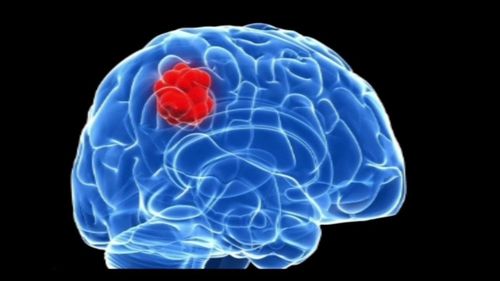This is an automatically translated article.
Article by Specialist II Khuc Thi Nhan - Neurosurgeon - Outpatient Department - Vinmec Times City International Hospital
Headache is a very common symptom, almost everyone has at least one headache in their life. Headaches have many causes and are divided into two categories c
1. Causes of acute headache
Acute headaches are mostly due to nerve damage, except for angle-closure Glaucoma and paroxysmal hypertensive crisis. Causes of acute headache include:
Bleeding in the brain and meninges , blood clotting disorder, taking anticoagulants...
The disease usually has a sudden onset with symptoms of severe headache, vomiting, confusion, bedwetting with meningeal signs... diagnosed through Computerized tomography .
Brain abscess Patients with brain abscess present with headache, nausea, vomiting, may have disturbances of consciousness or convulsions, accompanied by signs of infection
Diagnosis of brain abscess is based on micro tomography Computed tomography or cranial magnetic resonance imaging showed clearly demarcated, ring-shaped foci, surrounding cerebral edema, mass effect, and contrast enhancement in the abscess cortex.
Acute meningitis Patients with acute meningitis have severe headache accompanied by fever, stiff neck. Diagnosis is based on lumbar puncture.
Horton's disease (Superficial temporal arteritis) Horton's disease is common in European countries, over 50 years of age, presenting with acute headache and progressive progression, if not diagnosed and treated promptly, will cause complications of blindness due to thrombosis of the central retinal artery and its branches.
Closed angle glaucoma Angle-closed glaucoma manifests as a severe headache in the frontal area and one or both eyes, a feeling of being pushed out, accompanied by decreased visual acuity, red eyelids, photophobia, sometimes with ophthalmoplegia, pupillary deformity, increased intraocular pressure. If not diagnosed and treated promptly, it can lead to blindness.
Paroxysmal (malignant) hypertensive crisis Malignant hypertensive crisis often occurs in people with high blood pressure who are undiagnosed and untreated, or who quit or take their medication infrequently. Clinical symptoms include: Severe headache, blurred vision, paralysis or hemiplegia, convulsions... If diagnosed and treated promptly, the disease can be completely cured. Correct treatment can lead to death

Các nguyên nhân gây nhức đầu cấp tính hầu hết là do tổn thương thần kinh
2. Causes of Chronic Headaches
There are many causes of chronic headache, not only in neurological diseases but also in maxillofacial lesions, medical diseases and systemic diseases.
Brain Tumor Headache is often persistent, prolonged, pain increases over time and increases with exertion or change of position, may be associated with focal neurologic signs depending on tumor location ( paralysis or hemiplegia, cranial nerve palsy...). In some cases, severe, paroxysmal headache may be present in the presence of bleeding within the tumor or obstruction of CSF circulation. Diagnosis of brain tumor is based on the results of computed tomography or magnetic resonance imaging of the brain.
Post-traumatic headaches Headaches that appear weeks or months after injury are accompanied by amnesia, confusion, nausea, vomiting, or hemiplegia. Causes of headache after trauma may be encountered in the following cases:
Chronic subdural hematoma: Usually occurs within 3 months of injury. Computed tomography or cranial magnetic resonance imaging is required to rule out a hematoma.
Some cases do not have a hematoma but still have symptoms of headache accompanied by fatigue, dizziness, nervousness, anxiety, inability to concentrate and sleep disturbances, sometimes there may be changes in mood. manner and mood. In addition, in some cases, there may be post-traumatic Migraine headache, post-traumatic cranial nerve pain (V nerve pain).
Pain in the blood vessels in the face Pain in the blood vessels in the face is common in adults and young people (20-40 years old), more common in men than women (6/1), the disease is not familial. The pain is fixed on one side, usually starting in the eye area and spreading to the forehead and temples, cheeks, and maxillary teeth. Pain increases rapidly after a few minutes, severe pain such as scratching, burning, may be accompanied by symptoms of ipsilateral autonomic dysfunction such as tearing, red eyes, runny nose, slow pulse and sweating , nausea and vomiting. Episodes can last from 15 minutes to 180 minutes if left untreated, can recur several times a day and occur for weeks (2-12 weeks) between attacks with normal intervals for many years. months, however in some cases the pain occurs every day for many months.
Tension headaches This is one of the most common causes. The pain occurs every day, lasts for months, even years. Pain increases with psychological stress, decreases with rest. Pain on both sides, usually in the neck, occipital region. Pain in varying degrees, increases in the evening, but does not affect daily activities.
Migraine headache The disease is more common in women than in men (2/1), usually in young people < 45 years old, has a family nature. Patients with severe migraine headaches, fatigue, attacks usually last from a few hours to no more than 72 hours, occurring at any time, so patients are often worried and afraid, reducing quality of life. Migraine headaches are divided into two main types: Migraine without aura (general migraine) and Migraine with aura.
Subacute and chronic meningitis Tuberculous meningitis, subacute syphilis meningitis . Diagnosis is based on clinical symptoms and cerebrospinal fluid tests, positive syphilis serology or positive TB PCR.
Headaches caused by overuse of pain relievers Commonly in people with a history of headaches (Migraine, headaches caused by psychological stress...), more women than men, at the age of > 40, because drug abuse reduces pain (Paracetamol alone or in combination with Codeine, Caffeine, Gardenal... or Ergotamine)

Lam dụng thuốc giảm đau cũng là một trong những nguyên nhân gây nhức đầu
V nerve pain The V nerve is a nerve that supplies sensation in the face and is divided into 3 branches (V1; V2; V3). V-cord pain is characterized by intense "electric shock" hemifacial pain that may be accompanied by tearing, red face, pain along a nerve branch, and often with a painful trigger point (the pain is appear when brushing teeth, speaking, chewing...). V-string pain is divided into two types: Idiopathic V-cord pain: There are pain-free spaces between episodes. Clinical examination is normal. Vaginal pain symptoms: Constant dull pain, with each pain increasing. Clinical examination can detect vesicles along the nerve branches (Zona cord V) or detect accompanying lesions (paralysis of the peripheral VII or VIII nerve...)
Headache due to neck disease Headache can be seen in cervical spine abnormalities such as Arnord-Chiari and Klippel-Feil syndromes (congenital); polyarthritis and slippage in the upper cervical vertebrae; degenerative – osteoporosis of the cervical spine; In addition, it can also be seen in cases of carotid and basilar aneurysms.
Headaches of medical causes Headaches of medical causes include hypertension; respiratory failure (due to increased CO2); CKD; polycythemia vera; duodenal ulcer; alcohol or heroin poisoning, CO gas; taking oral contraceptives; fever.
Headaches due to nearby specialties: Eyes: Refractive errors such as nearsightedness, astigmatism. Maxillofacial: Tooth decay, tooth abscess. Otolaryngology: Sinusitis, nasopharyngeal cancer, complications of otitis media. Headaches due to other causes Usually due to cold, exertion, cough, cough related to sexual activity, pain after CSF...
To diagnose and find appropriate treatment, timely Sometimes you need to see a specialist. Vinmec International General Hospital is one of the hospitals that not only ensures professional quality with a team of leading doctors, modern equipment and technology, but also stands out for its examination and consulting services. and comprehensive, professional medical treatment; civilized, polite, safe and sterile medical examination and treatment space.
Please dial HOTLINE for more information or register for an appointment HERE. Download MyVinmec app to make appointments faster and to manage your bookings easily.
References : Headache Classification Committee of the International Headache Society (2013). The International Classification of the Headache Disorders, 3 rd edition; Cephalalgie 33 (9) 629-808.













